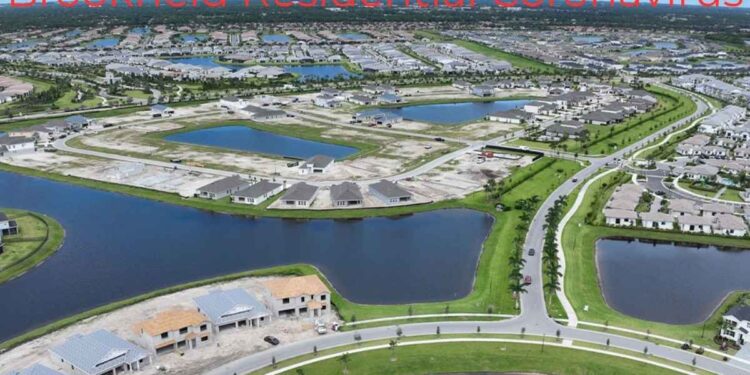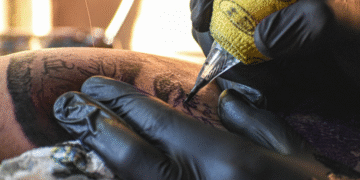The coronavirus pandemic brought disruption across every corner of society, reshaping industries and challenging organizations to rethink their operations. Among the sectors hit hardest was real estate, where traditional models of engagement, development, and sales were suddenly upended. Brookfield Residential, a leading land developer and homebuilder in North America, found itself at the crossroads of crisis and innovation. The onset of COVID-19 meant not only safeguarding employees and homebuyers but also reimagining how communities could be built, sold, and lived in under new conditions. The Brookfield Residential Coronavirus response serves as a case study of how resilience, adaptability, and foresight can drive a real estate company through unprecedented uncertainty.
Shifts in Consumer Behavior During the Pandemic
The pandemic changed how people viewed their homes. No longer were residences simply places to sleep or gather; they became the core of work, school, fitness, and leisure. This shift brought about a demand for larger spaces, functional home offices, and designs that accommodated a hybrid lifestyle. Brookfield Residential recognized these changing priorities early and began exploring how new housing models could align with the evolving needs of buyers. At a time when many developers hesitated, Brookfield pivoted its focus toward creating homes and communities that could support a more flexible way of living.
Technology as a Lifeline for Real Estate Transactions
One of the most immediate challenges was the need to minimize in-person contact while continuing operations. Brookfield Residential accelerated its investment in digital tools, introducing virtual tours, online home design customization, and secure digital closing processes. These innovations allowed buyers to explore properties safely from their homes, review documents remotely, and proceed with purchases without stepping foot into an office. The Brookfield Residential Coronavirus response demonstrated how quickly digitalization could be adopted in an industry traditionally reliant on face-to-face engagement. These solutions not only kept transactions flowing but also created new expectations for the convenience of future homebuyers.
Health and Safety in Construction and Community Spaces
The continuation of construction projects was vital, but safety became the top priority. Brookfield Residential implemented strict protocols at building sites, including social distancing requirements, protective equipment, staggered shifts, and sanitation stations. The company’s response was not only about compliance with health regulations but also about protecting its workforce and instilling confidence among buyers that homes were being built under the highest standards of care. In addition, community spaces within Brookfield developments were redesigned or adjusted to reflect the need for safer interactions. From outdoor gathering areas to widened sidewalks, the pandemic accelerated the creation of environments that encouraged wellness while respecting public health guidelines.
Market Resilience and Financial Strategies
Real estate markets faced volatility as buyers, sellers, and investors hesitated in the early months of the pandemic. Brookfield Residential navigated these challenges by emphasizing financial resilience and maintaining trust with stakeholders. Strategic adjustments in pricing, flexible financing options, and customer incentives played a critical role in sustaining momentum. Rather than pulling back, the company leveraged its strong position to reassure buyers that purchasing a home was still a secure investment. This financial resilience not only sustained the company but also contributed to broader market confidence at a time when uncertainty was widespread.
Redefining Community Living in the Age of Coronavirus
Beyond individual homes, Brookfield Residential placed significant emphasis on the role of community. The company recognized that the pandemic highlighted the importance of neighborhoods designed for connection, wellness, and adaptability. Brookfield’s developments incorporated walking trails, outdoor spaces, and amenities that aligned with the growing preference for safe, open-air environments. By fostering community resilience during the pandemic, Brookfield Residential not only responded to immediate needs but also established a vision for future developments where health, safety, and connection remain at the forefront.
Long-Term Design Innovations Inspired by the Pandemic
The coronavirus outbreak has left a lasting mark on architectural and community design. Brookfield Residential drew lessons from this experience and began integrating more flexible floor plans, adaptable spaces, and technologies such as touchless features. Homes were envisioned not just as shelters but as multi-functional spaces capable of adapting to changing family dynamics, remote work, and even potential future crises. This forward-thinking approach ensures that the lessons learned during the Brookfield Residential Coronavirus period will continue shaping its projects long after the immediate crisis has passed.
Building Trust with Buyers and Stakeholders
In times of uncertainty, trust becomes a company’s most valuable asset. Brookfield Residential prioritized transparent communication, keeping buyers and stakeholders informed about delays, safety measures, and policy updates. This approach reinforced confidence in the brand, demonstrating that the company was not only focused on profit but also on people. The coronavirus crisis reinforced the importance of empathy and integrity in business practices, both of which Brookfield displayed in its consistent engagement with customers, employees, and communities.
Resilience as a Model for the Industry
The Brookfield Residential Coronavirus response has become an example for the real estate sector as a whole. By embracing technology, prioritizing safety, and addressing changing consumer behaviors, the company created a model of resilience in a highly disrupted market. Its ability to adapt quickly without losing sight of long-term goals underscores the importance of flexibility in industries that face rapid change. Brookfield’s journey through the pandemic shows that real estate companies can emerge stronger when they focus not only on survival but also on innovation and community building.
Looking Ahead: The Lasting Impact of COVID-19
While the pandemic eventually eased, its influence on real estate continues. The changes in consumer expectations, technology adoption, and community design will remain part of Brookfield Residential’s long-term strategy. The company’s adaptability and resilience during this period ensure that it is better positioned to face future disruptions, whether economic, social, or environmental. The Brookfield Residential Coronavirus response reflects a pivotal moment in the company’s history—one that will shape its role as a leader in real estate development for years to come.
Frequently Asked Questions (FAQ)
1. What is the Brookfield Residential Coronavirus response?
- It refers to the strategies Brookfield Residential implemented during the COVID-19 pandemic, including digital innovations, safety measures, and community design adjustments to adapt to new realities.
2. How did Brookfield Residential use technology during the pandemic?
- The company introduced virtual tours, online design tools, and remote closing processes to allow buyers to continue transactions safely without in-person interactions.
3. Did Brookfield Residential continue construction during the coronavirus crisis?
- Yes, construction continued under strict health and safety protocols, including social distancing, protective equipment, and enhanced sanitation measures.
4. How did the pandemic change Brookfield Residential’s approach to community design?
- The company emphasized outdoor spaces, wellness features, and designs that promoted safe interactions and adaptability to hybrid living models.
5. What long-term changes will remain after the Brookfield Residential Coronavirus period?
- Flexible home designs, touchless technologies, outdoor community spaces, and enhanced digital engagement will continue to shape Brookfield Residential’s developments.


















